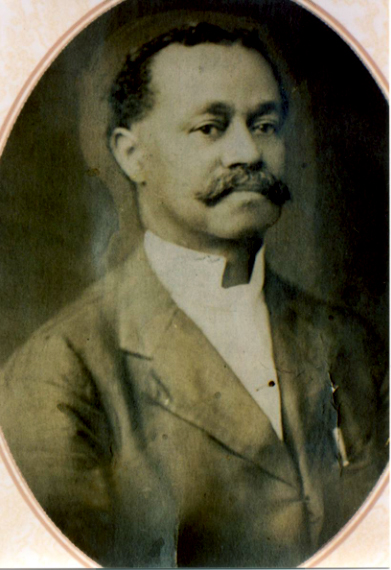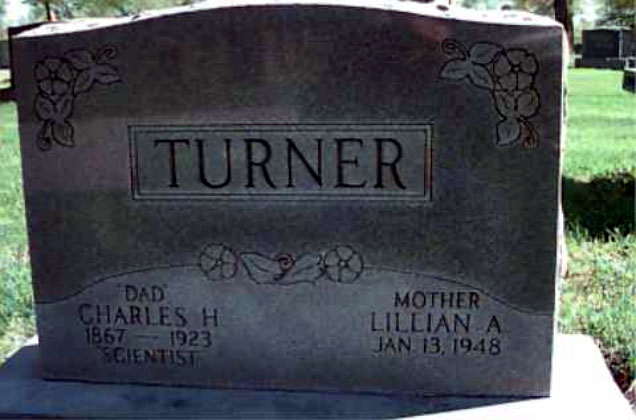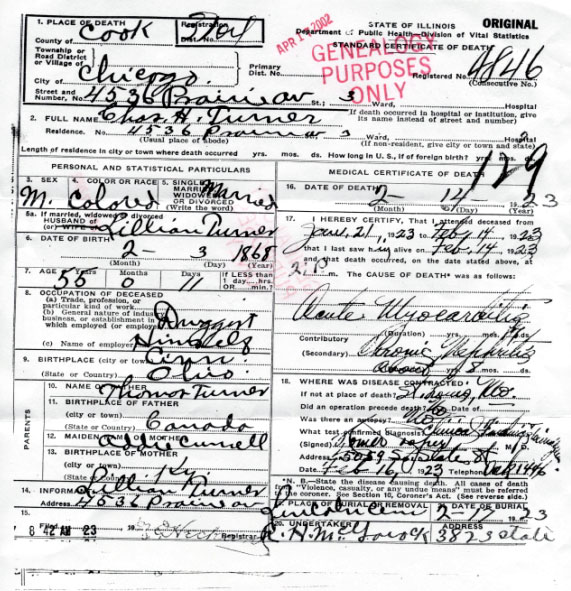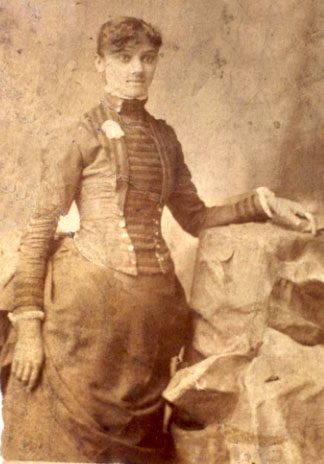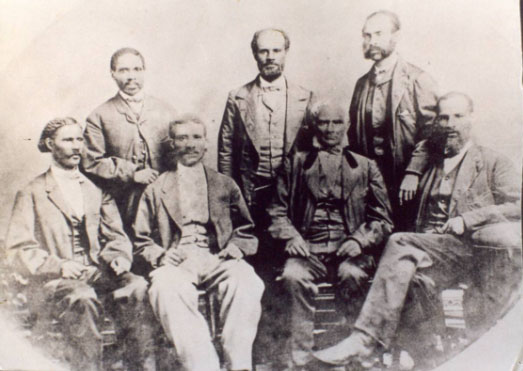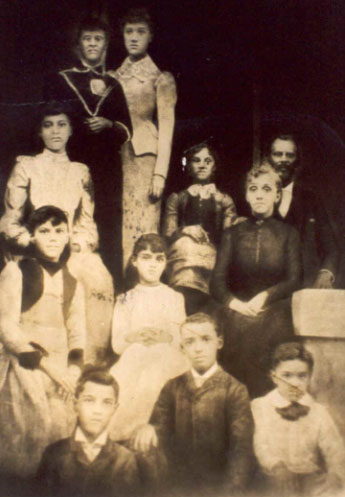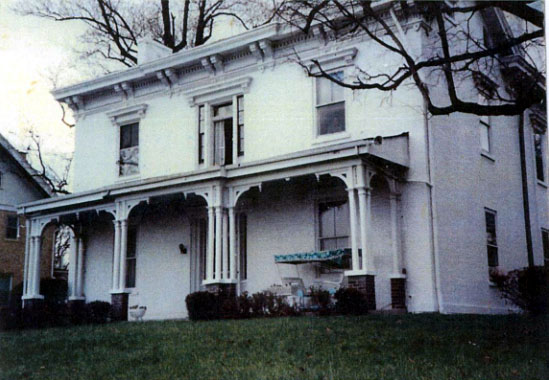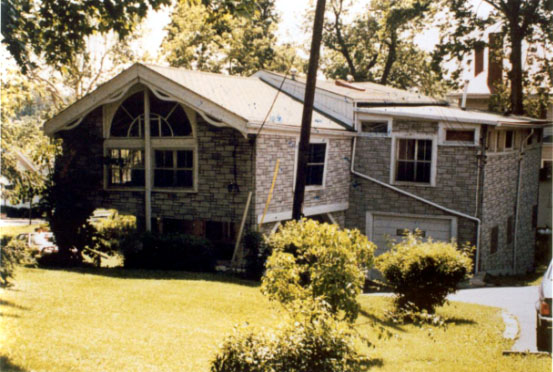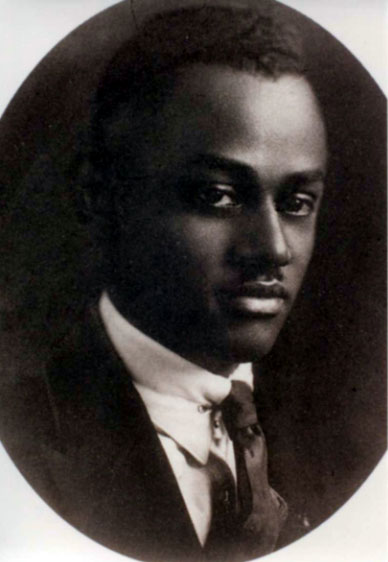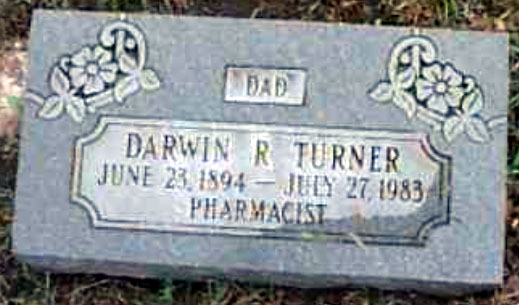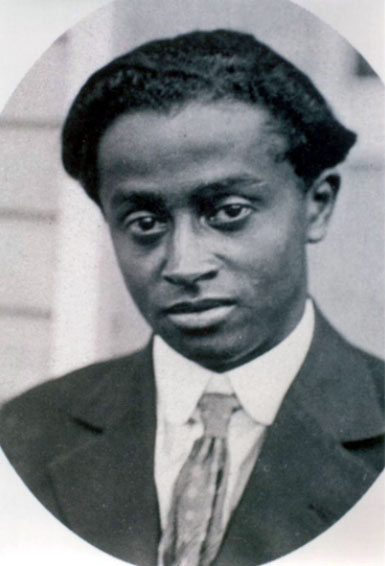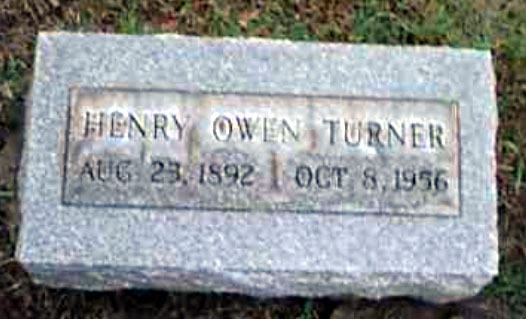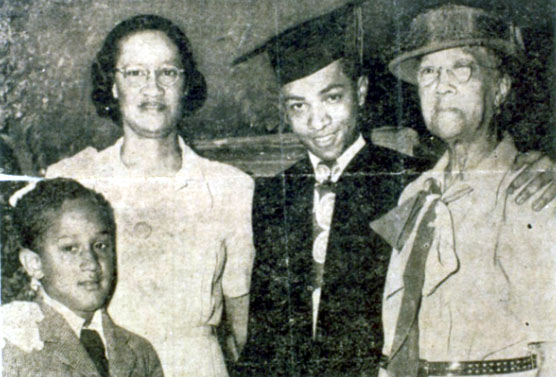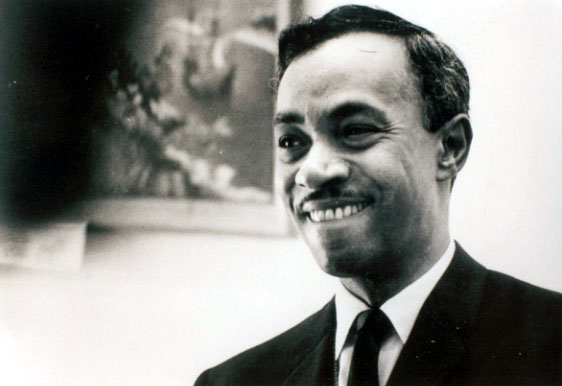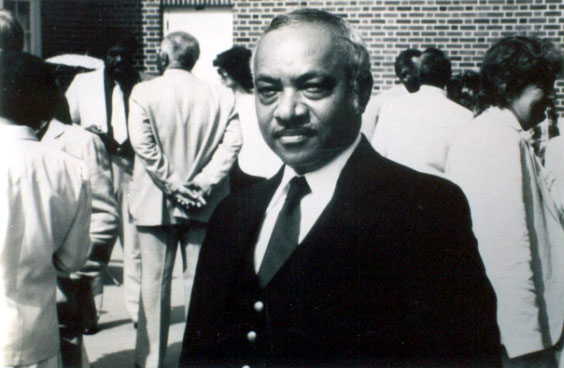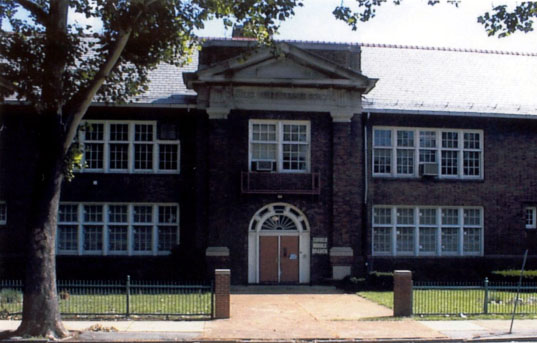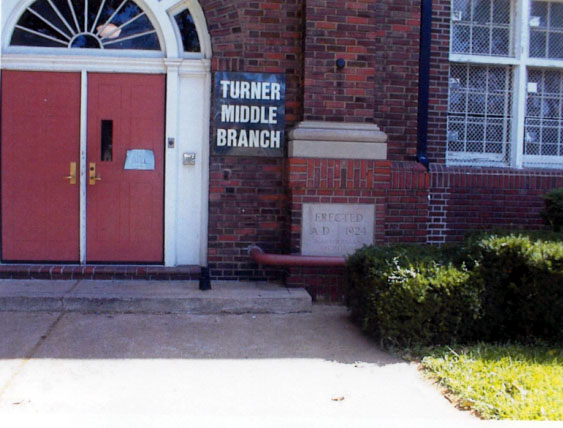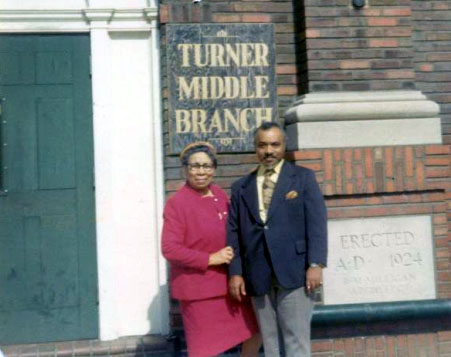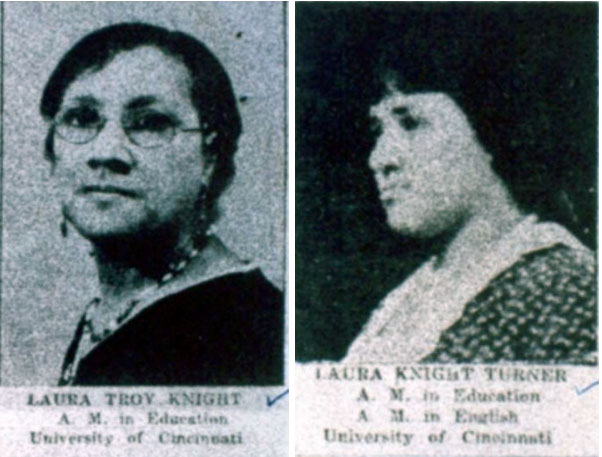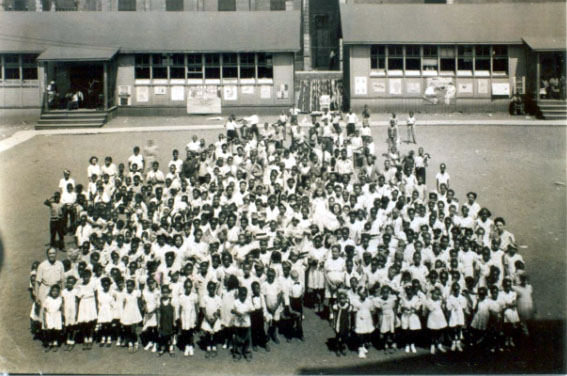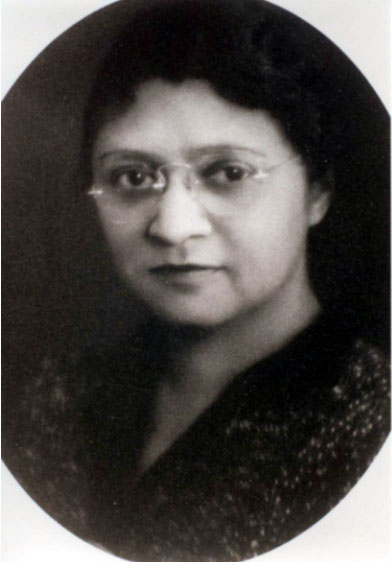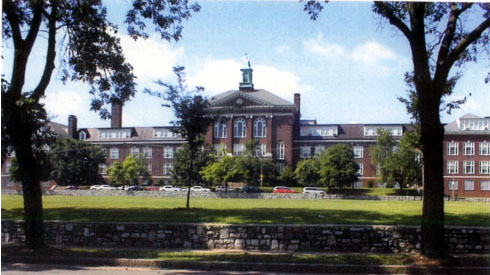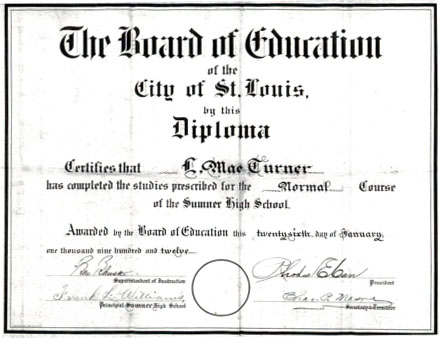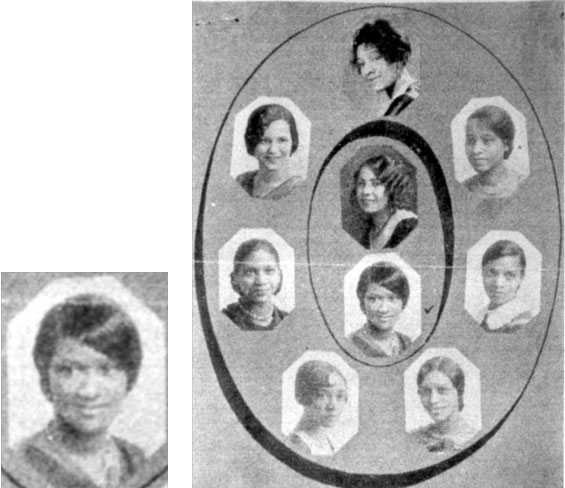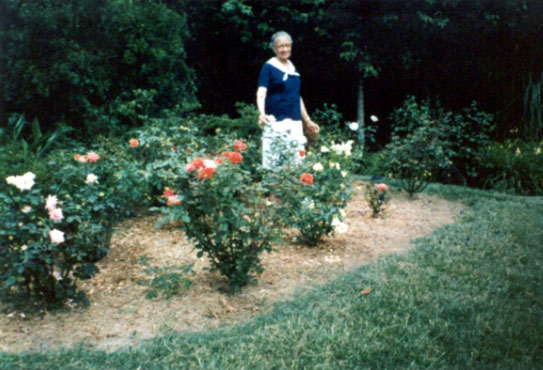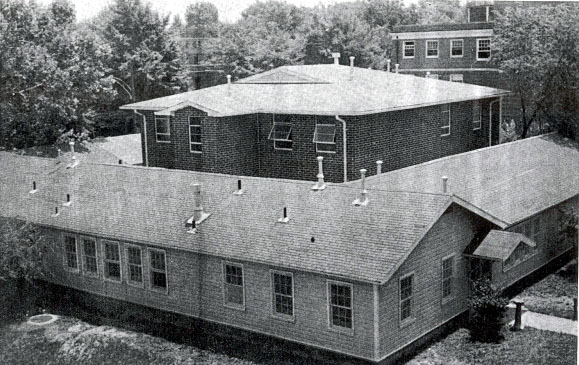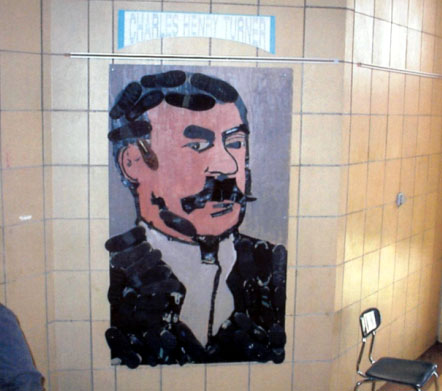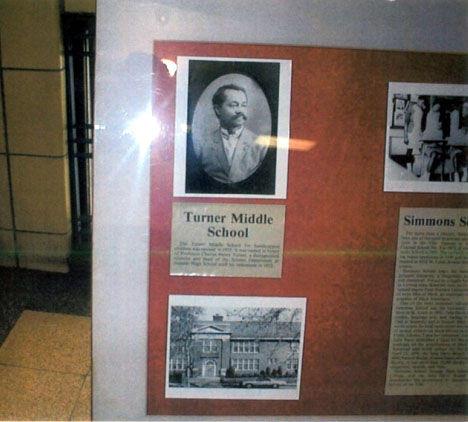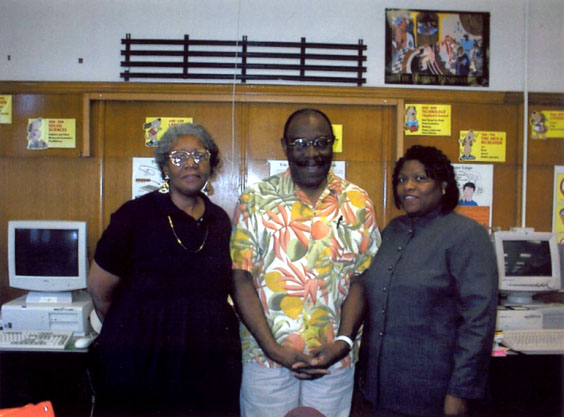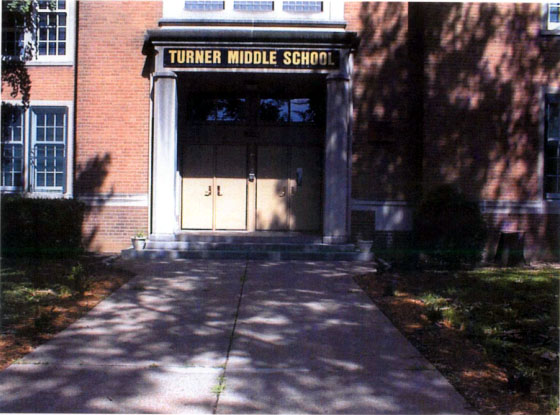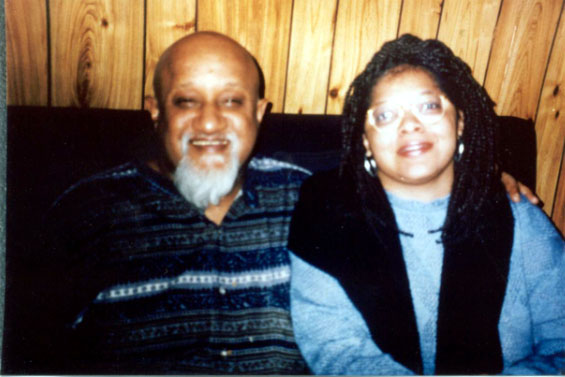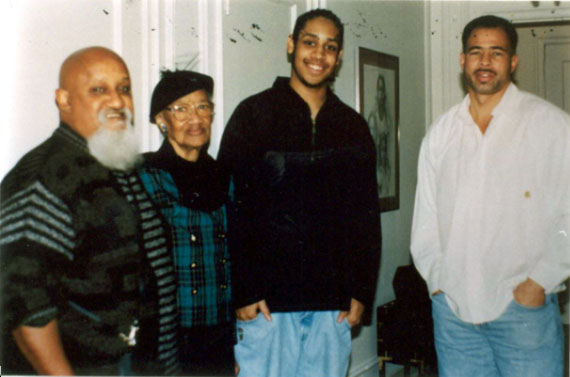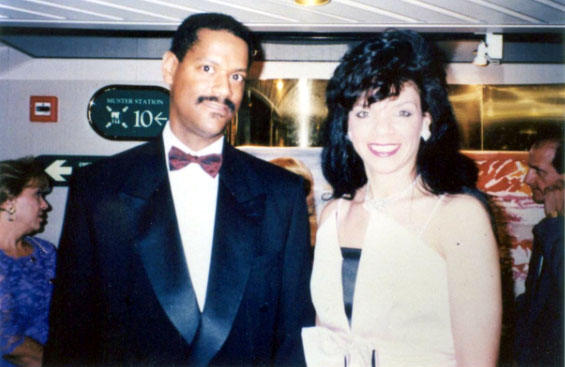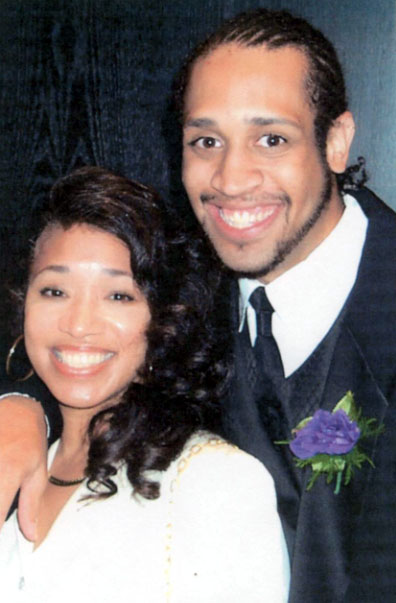Charles Henry Turner
Introduction
Welcome to the Charles Henry Turner web site! This site contains a brief biography, a time-line of significant events in Dr. Turner’s life, and family photographs. This site is designed to serve as a companion to the book Selected Papers and Biography of Charles Henry Turner (1867-1923), Pioneer of Comparative Animal Behavior Studies. The Infography, Fields of Knowledge, also has a selection of recommended readings and websites about Dr. Turner.
The purpose of this site is to encourage you to explore the many contributions of this remarkable scientist. In addition to acknowledging his many contributions, we hope that by acquainting a new generation of students with Professor Turner’s work, more people of color will be inspired to enter careers in the comparative analysis of behavior and other natural sciences. As you will learn from our biographical material, Professor Turner's story, by anyone’s standard, is inspirational and continues to be so almost 80 years after his death. We may not be voicing a popular opinion, but we believe Dr. Turner’s life is an excellent illustration of why money should be directed toward training and recruiting minority scientists in psychology and other disciplines – especially the natural sciences.
A second purpose in creating this site is to stimulate interest in the creation of
a “Charles Henry Turner Award” to be given annually to a comparative psychologist
concerned with educational issues. We hope that this site and the companion book (Selected
Papers and Biography of Charles Henry Turner (1867-1923), Pioneer of Comparative Animal
Behavior Studies, edited by Abramson, Jackson, and Fuller, 2003) will arouse interest
from the American Psychological Association, American Psychological Society, Psychonomic
Society, or some other professional organization to establish such an award. We also
hope that this volume will lead to increased recognition of Professor Turner by African
American leaders (i.e., inclusion in “Black History Month,” creation of a postage
stamp, biographies, etc.). The editors of this volume find, as I am sure you will,
that such a lack of recognition is nothing less than shocking.
The site is divided into three sections, all easily accessible from both the main
page and the sidebar on all of the pages. Section one provides a very brief overview
of the life of Dr. Turner especially his contributions to honey bee research. A time-line
of significant events related to the life of Dr. Turner is focus of the second. Section
three is very unique and consists of photographs from the Turner family. Most of these
photographs have not been published previously.
Biography
This is a brief biography of Charles Henry Turner and outlines some of his contributions to the study of honey bee behavior. In addition to making a new generation of beekeepers aware of Turner’s many contributions, I hope this sketch will serve as a source of inspiration to stimulate both minority students and students from disadvantaged backgrounds to enter the world of beekeeping and to learn more about this exceptional scientist.
Charles Henry Turner (1867-1923) was a pioneer of the comparative psychology and animal
behavior movement in America and one of the most influential scientists working on
problems of comparative behavior from the late 1890s through the early 1920s. Trained
as a zoologist, his research focused on questions concerning behavior. His contributions
included the development of techniques to measure learning and other types of behavior
of several invertebrate species (some of these techniques are still used more then
70 years after their invention), placing an emphasis (unique at the time) on how training
variables such as intertrial interval, intersession interval, individual differences
and age of subjects influence performance, publishing 70 scientific papers, and initiating
the first controlled studies of color vision and pattern vision in honey bees. In
addition to his behavioral work, Turner also published extensive anatomical studies
of both the avian and crustacean brain, discovered a new species of aquatic invertebrate,
and wrote on social and educational issues of the day. In regards to the latter topic,
Turner was a leader in the civil rights movement in St. Louis, MO and was instrumental
in developing social services for African-Americans in the St. Louis area.
Turner was born two years after the civil war on February 3, 1867 in Cincinnati, Ohio.
His father was a church custodian and his mother a practical nurse. Highlights of
his scholastic life included being selected as valedictorian of his high school class,
earning his B.S. degree in Biology from the University of Cincinnati, and becoming
the first African-American to be granted a Ph.D. from the University of Chicago.
Upon receiving his doctorate, Dr. Turner could not secure an academic appointment
at the University of Chicago despite having published over 30 papers. This included
the first paper by an African American in the prestigious journal Science. He was
also turned down for an appointment by Booker T. Washington, president of Tuskegee
Institute, because Washington could not afford to pay the salaries of both Dr. Turner
and Dr. George Washington Carver. As a result, Dr. Turner spent much of his early
academic career moving from high school to high school before settling at the age
of 41 in Sumner High School (St. Louis, Missouri). He would remain at Sumner until
his retirement in 1922 at age 55.
While at Sumner High School Dr. Turner continued to publish. His publication rate
of two articles per year exceeded most of his contemporaries working at colleges and
universities. His achievements are made even more remarkable when one considers that
he worked with unconventional organisms that required mastery of a wide range of rearing
techniques. These animals included various species of ants, bees, cockroaches, crustaceans,
moths, pigeons, spiders, and wasps. Dr. Turner also did work with plants. Moreover,
many of his papers included investigations of several species within the same manuscript.
Consider also that throughout his career he had few or no formal laboratory facilities,
no easy access to research libraries, no opportunity to train research students at
the undergraduate or graduate level, heavy teaching loads, low pay, and restricted
laboratory time. In regards to the latter, many of his experiments were run in the
summer and/or in the evenings when the opportunity presented itself.
One of the best examples of Turner’s behavior work is his studies of color and pattern
vision in the honey bee. Turner’s honey bee work is today all but forgotten in the
honey bee literature. For both papers, elaborate apparatus was constructed and controls
were implemented that conclusively showed that honey bees can perceive both color
and pattern.
The rationale behind the color vision paper (1910, Experiments on color-vision of
the honey bee, Biological Bulletin, 19, 257-279) was to provide data under controlled
conditions on the ability of bees to see color. Such experiments were theoretically
important because of the perceived interactions between honey bees and flowers. Professor
Turner begins the paper with a scholarly review of the literature (this literature
review is invaluable to honey bee researchers in its own right) in which the various
theories of why bees should see colors is enumerated, followed by a discussion of
the limitations of the existing data.
To investigate the problem, he studied honey bees in O’Fallon Park in St. Louis. He
designed various colored disks, colored boxes, and “cornucopias” into which the bees
were trained to fly. Thirty-two experiments were designed, and controls for the influence
of odor and brightness were instituted. The results of his experiments showed that
bees can see colors and discriminate among them. It is interesting that in considering
the results of his experiments, he believed that bees may be creating, in his words,
“memory pictures” of the environment. The idea of memory pictures is certainly contemporary.
In summarizing his results Professor Turner writes,
“While proving that bees have color-vision, these experiments throw no light upon
the color preferences of insects. That has not been the purpose of these researches.
The aim has been to answer the question, Can bees distinguish colors? The experiments
seem to demonstrate that foraging bees have percepts and that two factors which enter
into those percepts are color sensations and olfactory sensations (p. 279).”
The second paper of the series on honey bee learning (1911, Experiments on pattern
vision of the honey bee, Biological Bulletin, 21, 249-264) was stimulated by the color
vision paper. The methods were identical to the color vision paper with the exception
that various patterns were used, as were colors. The use of patterns and colors is
the first use, in my view, of compound conditioning methods so popular in contemporary
studies of animal learning. The study contains 19 experiments and the results showed
that honey bees can readily distinguish patterns.
In summarizing his results Professor Turner writes,
“There was much in the behavior of these bees to indicate that, in their ability to
distinguish minute details, they are near sighted. On examining the artifacts, either
when searching for an artifact or in making its flight of orientation, the bee always
hovered within a about a centimeter of the object examined (p. 263)”
What we find disappointing about these honey bee studies is that so few behavioral
scientists are aware of them. I doubt, for instance, that any reader of this article
has heard of Professor Turner or his contributions to the study of honey bee behavior.
In discussing the historical literature on honey bee behavior, Karl von Frisch (1923,
1967) and many contemporary writers on bee behavior never cited Professor Turner’s
contributions. Professor Turner, however, cited the contributions of von Frisch and
others. It is difficult to believe that von Frisch never heard of Turner – indeed
Professor Turner was probably better known in Europe then in the United States. The
honey bee papers appeared in 1910 and 1911, a full decade before the first von Frisch
reviews. Interestingly, many consider the training of bees to fly to a target as distinguished
by, for example, color or position, the “von Frisch technique.” It is obvious to anyone
who reads the early literature that training bees to fly to a target was not developed
by von Frisch. It is just this sort of lack of recognition that is so characteristic
and so perplexing when we consider Professor Turner.
In addition to his research with honey bees, Dr. Turner also used bees as teaching
tools in his biology classes at Sumner High School. His use of bees to demonstrate
principles of behavior represents one of the earliest attempts to do so at the high
school level. Commenting on his use of bees, a former student writes (as reported
in Hayden, R. C. 1970. Seven black American scientists. Reading, MA: Addison-Wesley),
“The bees appeared at the table at all three meals. Then Dr. Turner put jam only at
breakfast daily. They still came to each meal but found no jam at noon and night.
Soon they stopped coming. This shows they have some idea of time (p. 78).”
The importance of Turner’s work was recognized by leaders in the animal behavior movement
in the early 20th century. John B. Watson, for example, in considering a study on
ant behavior, called Turner’s method “ingenious.” Turner’s work was also discussed
by such well known scientists of the day as Margaret Washburn, E. L. Thorndike, T.
C. Schneirla and Eugene-Louis Bouvier. Moreover, in the animal behavior literature
of France a particular type of ant movement toward the nest is known as “Turner’s
circling” in honor of its discoverer.
Dr. Turner died at the home of his son Darwin Romanes Turner in Chicago, Illinois
on February 14, 1923 at the age of 55 soon after his retirement from Sumner High School.
In recognition of his outstanding achievements as a scientist, educator, and humanitarian
the first school for African American handicapped children was named in his honor
(Charles Henry Turner Open Air School for Crippled Children - Founded in 1925). Over
the years several schools in an area of St. Louis known as “The Ville” bears his name.
These include Charles Henry Turner Middle Branch (Founded 1954) and the new Charles
Henry Turner MEGA Magnet Middle School for 6th – 8th graders (Founded 1999). In 1962,
Turner-Tanner Hall (now known as Tanner-Turner) at Clark College in Atlanta, Georgia
was named in his honor.
Readers interested in learning more about Dr. Charles Turner can find material at:
The Infography, Fields of Knowledge. Biographical material and a selection of Dr.
Turner’s papers can be found in Selected Papers and Biography of Charles Henry Turner
(1867-1923), Pioneer of Comparative Animal Behavior Studies edited by Abramson, Jackson
and Fuller (2003). It is available from The Edwin Mellen Press,Lewiston, New York.
*The information on this page originally appeared in the following article: Abramson, C. I. (2003). Charles Henry Turner: Contributions of a Forgotten African American to Honey Bee Research. American Bee Journal, 143, 643-644.
Timeline
Timeline of Professor Charles Henry Turner: America’s First African American
Psychologist and First African-American Comparative Psychologist:
- 1867 Born February 3 in Cincinnati, Ohio (two years after the end of the Civil War). His father was Thomas Turner and his mother was Addie Campbell from Alberta, Canada and Lexington, Kentucky, respectively. Thomas was employed as a church custodian and Addie as a practical nurse.
- 1886 Enrolled in the University of Cincinnati, previously attended Woodard High School in Cincinnati (graduated as valedictorian of his high school class).
- 1887 Married Ms. Leontine Troy.
- 1891 Earned B.S. Degree from the University of Cincinnati (Biology).
- 1891 Published “Morphology of the avian brain”*. This is Turner’s first publication and was completed as partial fulfillment of his B.S. degree. The paper was reviewed by Donaldson (1891, American Journal of Psychology, 4, 302-303) who commented on “a laborious study of the avian brain…tests the taxonomic value of the brain of birds, with suggestive results.”
- 1892 Earned M.S. Degree from the University of Cincinnati (Biology). Spent time volunteering at the Cincinnati Observatory (note: We were unable to confirm the year. He may have volunteered during his undergraduate years).
- 1892 Published “Psychological notes upon the gallery spider”*. The appearance of this paper makes Professor Turner the first African American Psychologist and the first African American Comparative Psychologist.
- 1892 Published “A few characteristics of the avian brain”*. This article appeared in the journal Science (19, 16-17), establishing Professor Turner as the first African American to publish in this journal.
- 1892-1894 Daughter Louisa Mae Turner born (her profession: Teacher). We have been unable to locate specific information about her day and year of birth or the day and year she died. Louisa may have been born after Henry Turner and before Darwin Turner.
- 1892 Published “Notes upon Cladocera, Copedoda, Ostracoda, and Rotifera of Cincinnati.”* In this article he describes several new species of invertebrates.
- 1892 Henry Owen Turner was born August 23, 1892 (died October, 8 1956 – 64 years old). He was a pharmacist in Chicago (Owen was Darwin’s partner in their drugstore. Owen handled the daily business activities and Darwin handled the pharmaceutical aspects of the business).
- 1892-1893 Assistant instructor in the Biological Laboratory at the University of Cincinnati. There is some suggestion that he was the only African American instructor at the University of Cincinnati during that time.
- 1893 Unsuccessfully applied for a position at Tuskegee Institute.
- 1893-1894 Became a Ph. D. student “in absentia” at Denison University (newly established but short-lived program established by his mentor, C. L. Herrick. “In absentia” graduate programs were not unique at that time).
- 1894 Darwin Romanes Turner was born June 23, 1894 (died July, 27 1983 – 89 years old). He was a pharmacist in Chicago, having earned his degree in pharmacy at the University of Chicago. He owned a pharmacy in Chicago.
- 1893-1905 Professor of Biology (and chair of the science department) at Clark University (also referred to as Clark College), Atlanta, Georgia (Note: The available biographical material has discrepancies on how long he was at Clark University. Occasionally it is suggested that he left in 1895/1896 and taught in the public school systems of Evansville, Indiana and Cincinnati, Ohio. One book chapter (Turner, 1902) lists the institutional affiliation as Clark University. Clark University was founded in 1869 by the Freedmen’s Aid Society of the African Methodist Episcopal Church.
- 1895 Mrs. Leontine Troy Turner died in Atlanta. There is a suggestion that she suffered from a mental illness several months before her death (Ross, 1997).
- 1895 Co-authored with his mentor C. L. Herrick a 500-page treatise on the Entomostraca of Minnesota. Professor Turner is specifically credited with writing the section on the Ostracoda. His affiliation is listed as “Professor of Natural Science” at Clark University, Atlanta, Georgia. It is interesting to note that in the “letter of Transmittal” the Minnesota State Zoologist – Henry F. Nachtrier – writes “These gentlemen have given their services to the survey without charge, having asked for and received barely enough to cover their expenses.”
- 1897 Published “Reason for Teaching Biology in Negro Schools” (Southwestern Christian Advocate, 32, 2). This was the first of a series of papers discussing the importance of education for both Caucasian and African American children. He advocates both vocational training and training in arts, languages, and the sciences.
- 1905-1906 High School Principal, College Hill High School, Cleveland, Tennessee
- 1906 Published “A preliminary note on ant behavior.”* J. B. Watson (1907, Psychological Bulletin, 4, 300-301) reviews the paper and comments on “the authors rather ingenious method” (p. 300).
- 1906-1907 Spent the summer of 1906 and the 1906/1907 academic year at the University of Chicago.
- 1907 Earned Ph.D. University of Chicago (magna cum laude – zoology). First African American to earn a Ph.D. at the University of Chicago.
- 1907 Delegate to the Seventh International Zoological Congress and secretary of the animal behavior section.
- 1907 Denied an appointment at the University of Chicago (some sources suggest that he turned the appointment down).
- 1907-1908 Professor of Biology and Chemistry, Haynes Normal and Industrial Institute, Augusta, Georgia, (there is some suggestion that he also taught psychology). Marries Ms. Lillian Porter.
- 1908-1922 High school teacher, Sumner High School, St. Louis, Missouri (starting salary $1,080/year).
- 1910 Elected to membership in the Academy of Sciences of St. Louis (some sources place the date of his election as 1912).
- 1910 Published “Experiments on color-vision of the honey bee”* (Biological Bulletin, 19, 257-279). Provides conclusive evidence that honey bees can see color.
- 1910 In his studies of the homing of ants, V. Cornetz (1910, “Trajets de fourmis et retours au nid”. Mém. De l’Inst. Gén. Psych., 2, 1-167) names the exploratory circling movements of ants on a return to the nest “tournoiement de Turner” (Turner Circling) in honor of its discoverer – Professor Turner.
- 1911 Published “Experiments on the pattern vision of the honey bee.”* Provides conclusive evidence that honey bees can see patterns.
- 1912 Honored by The Crises magazine as one of the “Men of the Month.”
- 1914 Published “Auditory Powers of the catocala moths: An experimental field study” with Ernst Schwarz (Biological Bulletin, 27, 275-293). Provides conclusive evidence that insects can hear air-borne sounds.
- 1914 Published “An experimental study of the auditory powers of the giant silkworm moths, Saturniidae” (Biological Bulletin, 27, 325-332). Describes what we consider to be the first classical conditioning experiment with insects.
- 1922 Retired from Sumner High School and moved to Chicago to live with his son Darwin Romanes Turner because of illness.
- 1923 Died February 14 in Chicago, Illinois. He was 55 years and 11 days old.
- 1924 Last publication: A new field method of investigating the hydrotropisms of fresh-water invertebrates (Biological Bulletin, 46, 35-54)*.
- 1925 Charles Henry Turner Open Air School for Crippled Children founded. It was the first school of its type for African American children in St. Louis and was located at 4235 Kennerly. Many of the students suffered from tuberculoses and the prescribed treatment at the time was fresh air (i.e., “Open Air School”). Interestingly, the school had no stairs; ramps connected the various floors and entryways. This school is now known as the Charles Henry Turner Middle Branch (part of the Charles Henry Turner MEGA Magnet Middle School complex) and is located in the same building.
- 1929 T. C. Schneirla (1929) comments extensively on the value of Professor Turner’s work with ants (Learning and orientation in ants. Comparative Psychology Monographs, 6 (no. 4).
- 1948 Mrs. Lillian Porter Turner died in Chicago, Illinois (January 13). Mrs. Turner was Professor Turner’s second wife.
- 1954 Charles Henry Turner Middle Branch is created in St. Louis. It was formerly known as the Charles Henry Turner Open Air School for Crippled Children. The school educates students in 6th through 8th grades and is multi-racial. This school is now known as Charles Henry Turner Middle School (2615 North Billups) and is part of the Charles Henry Turner MEGA Magnet Middle School complex.
- 1956 Henry Owen Turner died (October, 8) at age 64.
- 1962 Turner-Tanner Hall (now known as Tanner-Turner) renovated to house the Clark College (Atlanta) Biology and Art departments. Clark University records suggest the original building was erected in the 1940s.
- 1983 Darwin Romanes Turner died (July, 27), at the age of 89.
- 1997 Publication of Bug watching with Charles Henry Turner by M. E. Ross (1997, Minneapolis, Carolrhoda Books). This book is written for children and is part activity book and part biography.
- 1999 Charles Henry Turner MEGA Magnet Middle School is created. The MEGA stands for Multimedia Electronic Graphic Arts and the school educates students in 6th–8th grades. The school is located in the building that at one time housed Harriet Beecher Stowe College (2615 North Billups). Upon graduation, students can enter Sumner High School (located in the same neighborhood as the Turner school complex). The Charles Henry Turner Middle Branch is now an extension of the Charles Henry Turner MEGA Magnet Middle School.
- 2003 Publication of the Selected Papers and Biography of Charles Henry Turner (1867-1923), Pioneer of Comparative Animal Behavior Studies by the Edwin Mellen Press, Lewiston, New York.
Citation identified by an asterisk (*) are reprinted in: Selected Papers and Biography of Charles Henry Turner (1867-1923), Pioneer of Comparative Animal Behavior Studies.
Photographs
The following photographs were graciously shared by Dr. Turner's family. They are not to be used or distributed without their permission.
Dr. Charles Henry Turner
Dr. Turner's grave marker (his second wife Lilian is buried beside him)
Dr. Turner's death certificate
Leontine Troy Turner (Charles Henry Turner’s first wife)
The Troy family, part one. Back row: Clifford Troy, Isaac Troy, Samuel Troy Jr. Front row: Theodore Troy (Father of Leontine Troy), John Troy, Samuel Troy Sr., Robert Troy
The Troy family, part two. Top row: Alvia Troy Savage, Laura Troy Knight. Second row: Estell Troy Williams, Leontine Troy Turner (Charles Henry Turner’s first wife), Alphia Nickens Troy,Theodore Troy Sr. Third row: Luccita Troy Wilson, Florence Troy Surlock Taylor. Bottom row: Ralph Troy Turner, Thaddeus Troy, Claudius Troy
Troy-Turner family home in Cincinnati, OH
Darwin Romanes Turner
Grave marker of Darwin Romanes Turner
Henry Owen Turner
Grave marker of Henry Owen Turner
Darwin Turner's college graduation: From left to right: Charles Henry Turner II, Mamie Leontine Knight Faulkner, Darwin Theodore Turner, Laura Troy Knight
Darwin Theodore Turner
Turner Middle Branch
Darwin Turner and a former student of Dr. Turner's at Turner Middle Branch
Left: Mother, Laura Troy Knight (sister in-law to Charles Henry Turner) and Daughter, Laura Knight Turner (Mother of Charles Henry Turner II). Both graduated with their Master’s degree on the same day. They were the first mother/daughter Master’s graduates at the University of Cincinnati. They were also members of Alpha Kappa Alpha Sorority, Inc.
Principal Laura Troy Knight (Leontine Troy Turner’s sister and maternal grandmother to Darwin T. Turner and Charles Henry Turner II), and the students of Jackson Elementary School in Cincinnati, OH., upon her retirement - circa 1944
Louisa Mae Turner
Louisa Mae Turner's High School and Diploma
Mamie Leontine Knight Faulkner was a member of the Omicron chapter of Alpha Kappa Alpha Sorority, Inc. Laura Troy Knight and Laura Knight Turner were also members of the sorority.
Mamie Leontine Knight Faulkner
Turner -Tanner Hall at Clark College (1962)
Mural of Dr. Turner at the Turner MEGA Magnet School
Display at the Turner MEGA Magnet School
Turner MEGA Magnet Middle School staff. From left to right: Ms. Barbara Harris (former secretary), Ernest Carter (Assistant Principal), and Ms. Yolanda Austin (Principal)
Turner Middle School
Charles Henry Turner II
Charles Henry Turner II & Terri Small-Turner
From left to right: CHT II, Mamie Knight Faulkner (CHTII’s Aunt), Reginald Jelani Welch (C. H. Turner’s Great Great Grandson, Darwin T. Turner’s grandson), Darwin Keith Turner (C. H. Turner’s Great Grandson & the son of Darwin T. Turner)
David Martin and Clara McKinney-Martin (Clara is a second cousin of Charles Henry Turner II and Assistant Superintendent of the Cincinnati School System)
Pam Turner Welch (daughter of Darwin T. Turner, Great Granddaughter of Charles Henry Turner) and her son, Reginald Jelani Welch.
The material in this site is copyright 2003 by Dr. Charles I. Abramson and cannot be used without the express permission of Dr. Abramson, Ms. Terri Small-Turner, and Charles Henry Turner II.

